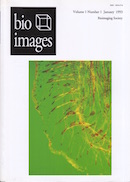Volume 11, Issue 2
August
Displaying 1-4 of 4 articles from this issue
- |<
- <
- 1
- >
- >|
Review
-
2003 Volume 11 Issue 2 Pages 53-60
Published: 2003
Released on J-STAGE: October 28, 2005
Download PDF (1623K)
Regular Article
-
Article type: scientific monograph
Subject area: Infomation Science
2003 Volume 11 Issue 2 Pages 61-66
Published: 2003
Released on J-STAGE: October 28, 2005
Download PDF (5086K) -
Article type: scientific monograph
Subject area: Infomation Science
2003 Volume 11 Issue 2 Pages 67-73
Published: 2003
Released on J-STAGE: October 28, 2005
Download PDF (1004K) -
Article type: scientific monograph
Subject area: Infomation Science
2003 Volume 11 Issue 2 Pages 75-83
Published: 2003
Released on J-STAGE: October 28, 2005
Download PDF (3230K)
- |<
- <
- 1
- >
- >|
